Recent Articles
Popular Makes
Body Types
2019 Volkswagen Atlas vs. 2019 Toyota Highlander: Which is Best?
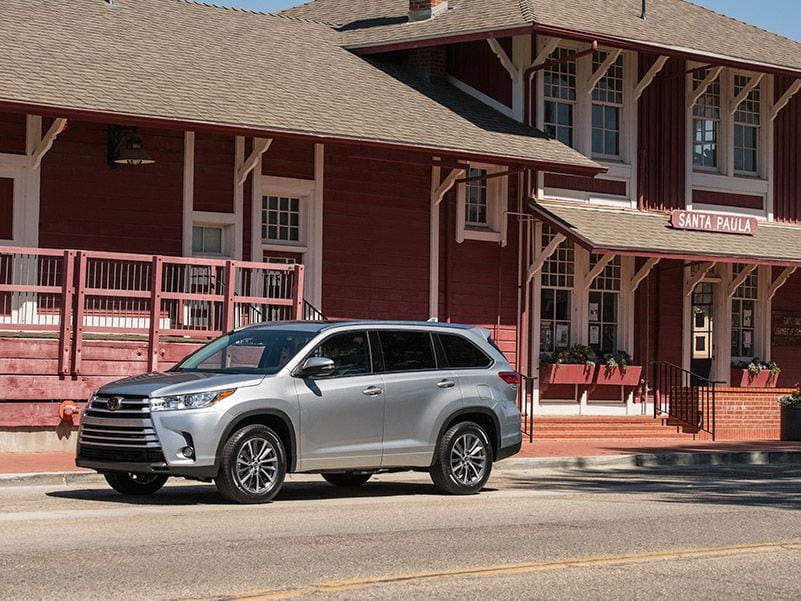
2018 Toyota Highlander SE house profile ・ Photo by Toyota
The Toyota Highlander and Volkswagen Atlas both are solid competitors in the midsize three-row SUV segment. The Highlander has been in the segment since the 2001 model year. It’s deep into its third generation in the United States, and typically resides toward the top of the list in sales. After resisting the three-row SUV category for years, Volkswagen entered it belatedly just last year with the 2018 Atlas.
Both vehicles offer four-cylinder and six-cylinder engines, and both vehicles seat seven. Versatility, safety, interior room, and overall comfort are much higher on their priority lists than performance or handling prowess. Both are attractive vehicles offering pleasant and functional interiors, and both, despite their import nameplates, are built in the United States.
So, what are we talking about here?
As we said, the Volkswagen Atlas is new to the segment, and the 2019 model is very similar to the introductory 2018 version. Should you buy an Atlas, you will have a vehicle that will look “new” for several years to come.
On the other hand, the 2019 version of the Toyota Highlander might well be the last model with the current body style. The 2020 Highlander, expected to be unveiled next year, will be significantly different inside and out. At the same time, the current Highlander does an excellent job of fulfilling the needs and desires of its family-car buyers, so there should be no hesitation in purchasing one despite the fact a new version is coming. This year the Highlander ranks a solid number three on the midsize SUV sales charts, indicating that a lot of buyers like what they see.
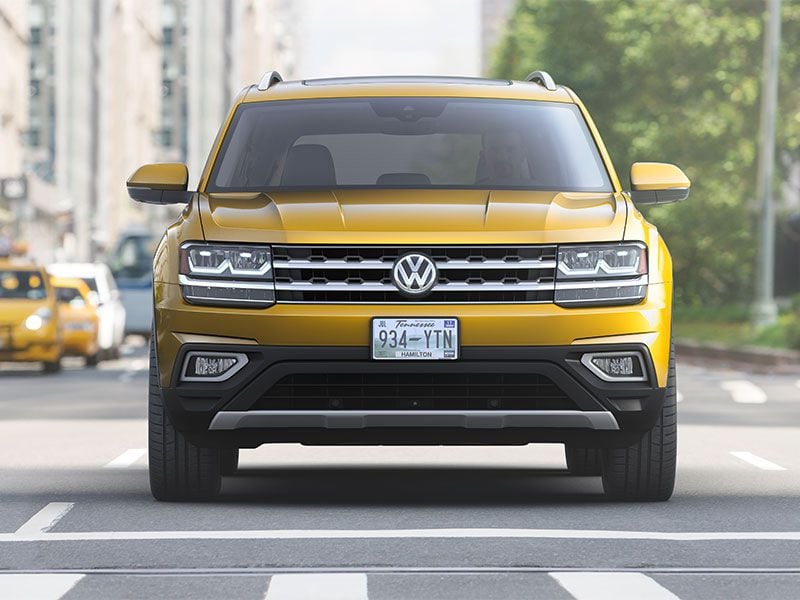
Photo by Volkswagen
Base Engines and Transmissions
The base front-drive Toyota Highlander is equipped with a tried-and-true version of the brand’s 2.7-liter four-cylinder engine. The Highlander’s dual overhead cam, 16-valve four-cylinder engine delivers 185 hp and 184 lb-ft of torque. It is teamed with a six-speed electronically controlled automatic transmission with sequential-shift mode and snow mode.
The base engine in the Atlas is significantly more powerful. It uses direct injection and turbocharging to develop 235 hp and 258 lb-ft of torque from its 2.0-liters of displacement. A single-scroll turbocharger enables the power to come on quickly with little lag. The base Atlas also is front-drive, and it uses an eight-speed automatic transmission. The Highlander offers an all-wheel-drive version with its base engine, but the base engine for the Atlas offers substantially more power.
Advantage: Volkswagen Atlas
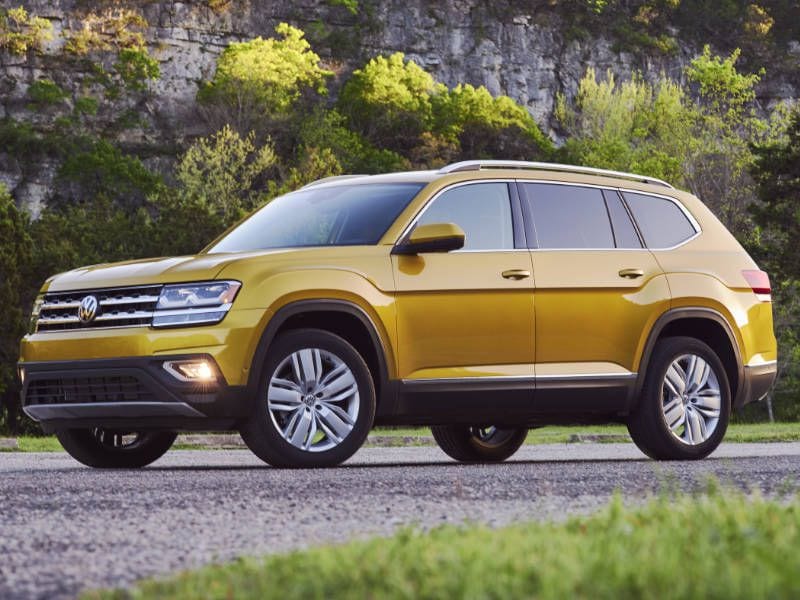
Photo by Volkswagen
Optional Engines and Transmissions
The Toyota Highlander offers two optional drivetrains, while the Volkswagen Atlas offers just one. The optional engine for the Atlas is a normally aspirated 3.6-liter V6 engine that delivers 276 hp and 266 lb-ft of torque at 2,750 rpm. It uses a crossflow aluminum-alloy cylinder head, twin overhead camshafts, four valves per cylinder, and variable valve timing. Backed by an eight-speed automatic transmission, it is available in front-drive and all-wheel-drive form.
The Highlander also is available with V6 power. Its 3.5-liter V6 delivers 295 hp and 263 lb-ft of torque, channelled via an eight-speed automatic. Toyota also offers the Highlander in hybrid form. It uses a 3.5-liter V6 engine supplemented by electric motors to deliver a combined 306 hp. Torque is delivered through a continuously variable automatic transmission, and the electric motors facilitate its all-wheel drive.
Advantage: Toyota Highlander
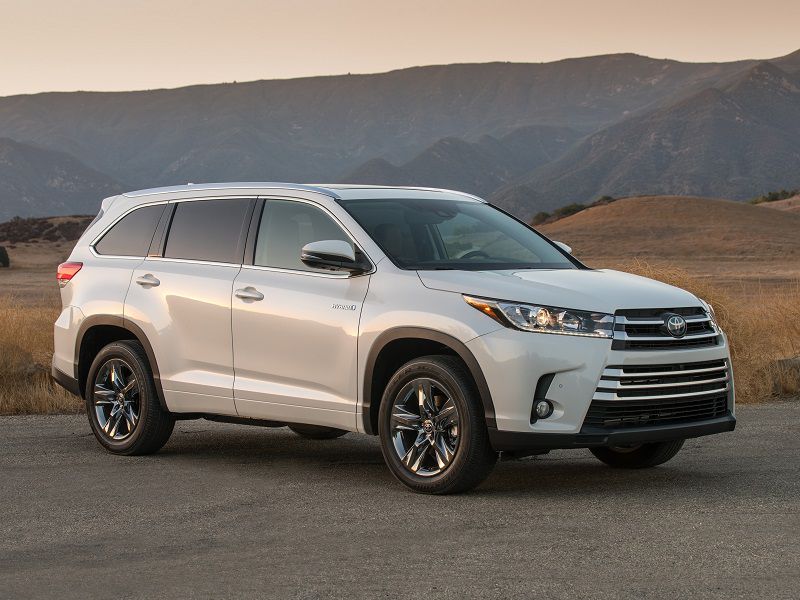
Photo by Toyota
Handling and Roadability
One trait the Toyota Highlander and Volkswagen Atlas share is good roadability. Neither is a top pick for auto crossing, but they are stable, comfortable and forgiving behind the wheel. Even with the (slightly) more powerful V6 engine, the Volkswagen Atlas offers leisurely acceleration. In fact, the availability of all-wheel drive with the V6 is a better reason to opt for it than its performance.
On the other hand, the optional V6 and hybrid powertrains in the Toyota Highlander each offer substantially better acceleration than the base engine. Unless price is paramount, avoiding the four-cylinder-powered Highlander is wise. The Atlas offers more communicative steering, and it is the better choice if you are seeking performance-style handling. But most will probably appreciate the comfortable ride of the Highlander.
Advantage: Toyota Highlander
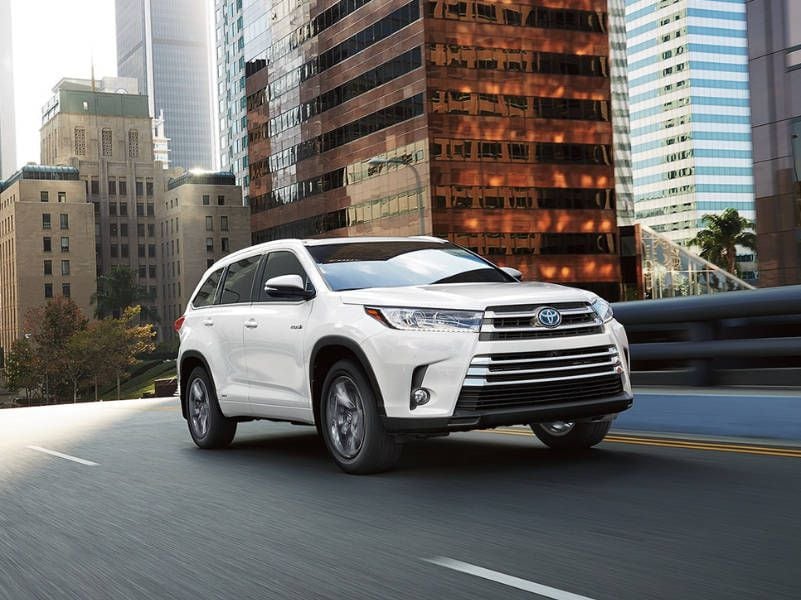
Photo by Toyota
Exterior Style
As we mentioned, the Highlander is a year or so away from being replaced, yet it still remains well-tailored. It is immediately recognizable as a Toyota, but it also shares styling traits with a number of other midsize crossovers.
The Volkswagen Atlas, on the other hand, presents a different exterior look that is at once functional and distinctive. While most vehicles in the segment are rounded like a used bar of soap, the Atlas revels in its sharp angles. It is about mid-pack in terms of overall length, height and width, yet it has a mammoth interior. The Highlander is nearly six inches shorter than the Atlas in overall length and about two inches shorter in height, which, of course, has ramifications in interior space.
Advantage: Volkswagen Atlas
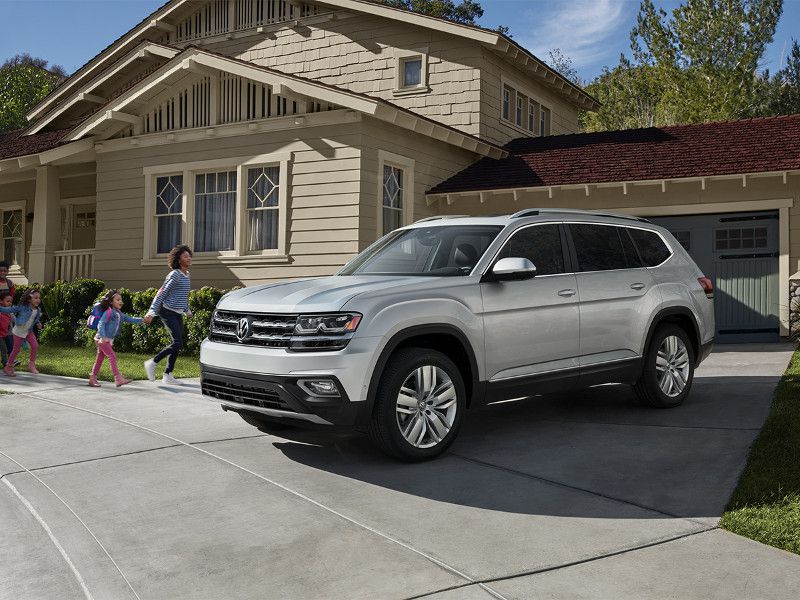
Photo by Volkswagen
Interior Style
The Volkswagen Atlas was one of the last vehicles to join the three-row crossover party, but Volkswagen brought its A game to the task. While some previous VW vehicles have been cramped compared to their competitors, the Atlas is one of the roomiest midsize three-rows you can buy. All three rows can comfortably accommodate adults, a neat trick in itself, and the Atlas is stuffed with cupholders, a distinctly American affectation. The Atlas also features VW’s patented understated interior style. Controls are understandable and easy to use.
In comparison, the Highlander offers first-class accommodations to the two people in the front bucket seats. After that, things get progressively tighter. The third row is habitable only by children. On the plus side, the buyer has the choice of captains chairs or a three-person bench for the second row. The Highlander’s controls and switchgear are getting a bit dated.
Advantage: Volkswagen Atlas
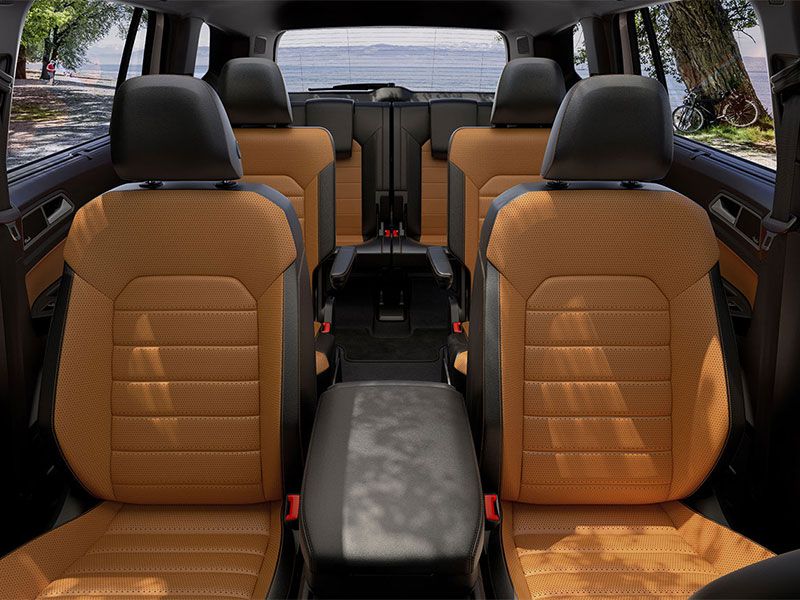
Photo by Volkswagen
Infotainment and Tech
If you take a quick look at the Highlander’s infotainment systems, they seem state-of-the-art. The base model has a 6.1-inch touchscreen, and all other trims offer an eight-inch screen. But the Highlander’s Entune system is more notable for what it doesn’t offer — Apple CarPlay and Android Auto — than what it does offer, and that could be a deal breaker. The system does have Bluetooth streaming, five USB ports and an auxiliary input jack. In the up-level LE Plus, SiriusXM satellite radio and a link that allows the projection of smartphone navigation also are parts of the offering.
The VW screen sizes are similar — 6.5-inches in the base model and eight inches all others — but Apple CarPlay and Android Auto are standard equipment. Bluetooth is standard across the board, and all but the base trims offer SiriusXM satellite radio. Integrated navigation with real-time traffic is on the option list.
Advantage: Volkswagen Atlas
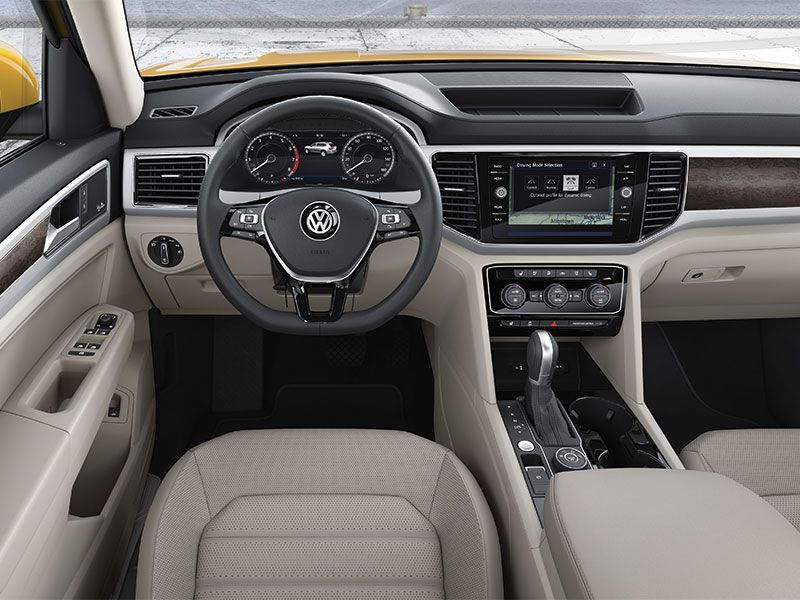
Photo by Volkswagen
By the Numbers
When it comes to fuel economy numbers, the four-cylinder and six-cylinder versions of the Toyota Highlander turn in nearly identical performances. The 2.7-liter four cylinder has EPA ratings of 20 mpg city/24 mpg highway/22 mpg overall, while the 3.5-liter V6 has EPA ratings of 21 mpg city/27 mpg highway/23 mpg overall. Credit the eight-speed versus the six-speed transmission for the V6’s better numbers. Of course, the most fuel-efficient of the Highlanders is the hybrid, with EPA ratings of 29 mpg city/27 mpg highway/28 mpg overall.
In contrast, the Volkswagen Atlas with the four-cylinder turbocharged engine delivers 22 mpg city/26 mpg highway/24 mpg overall, and the version with the 3.6-liter V6 gets 17 mpg city/24 mpg highway/19 mpg overall. As you can see, the Atlas with its V6 is significantly less fuel-efficient than the V6-powered Highlander.
Advantage: Toyota Highlander
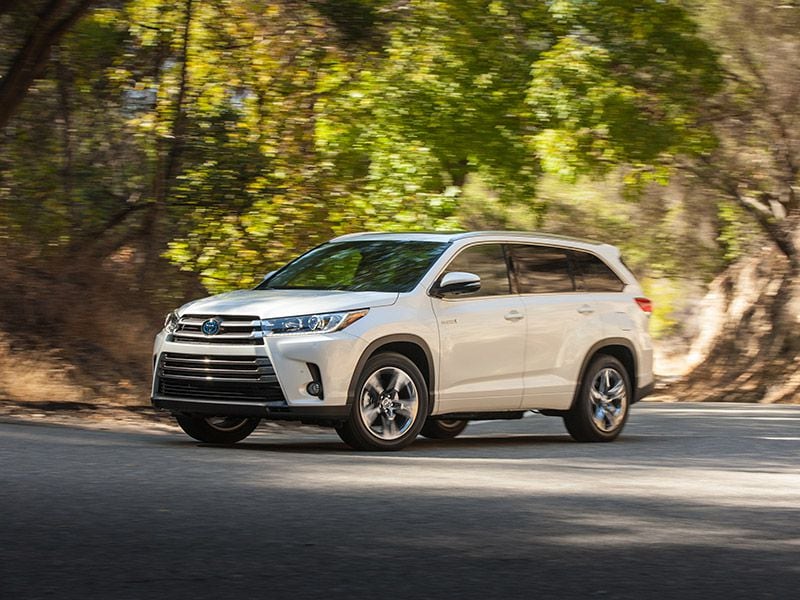
Photo by Toyota
The Verdict
Both of these crossover suvs are satisfying vehicles that should deliver years of service. Each has its strengths and weaknesses. In coming to a conclusion on which is better, a key factor is the age of each platform. The Highlander will be renewed soon, while the Atlas should soldier on in much the same form for several years.
You need to ask yourself if you care. If you don’t mind driving a vehicle that isn’t the newest representation of its species, the Highlander is a good choice, especially if you can drive a better deal on the vehicle than you might have otherwise. But should you seek new tech, including Apple CarPlay and Android Auto, the Volkswagen Atlas is the better choice.
Advantage: Volkswagen Atlas
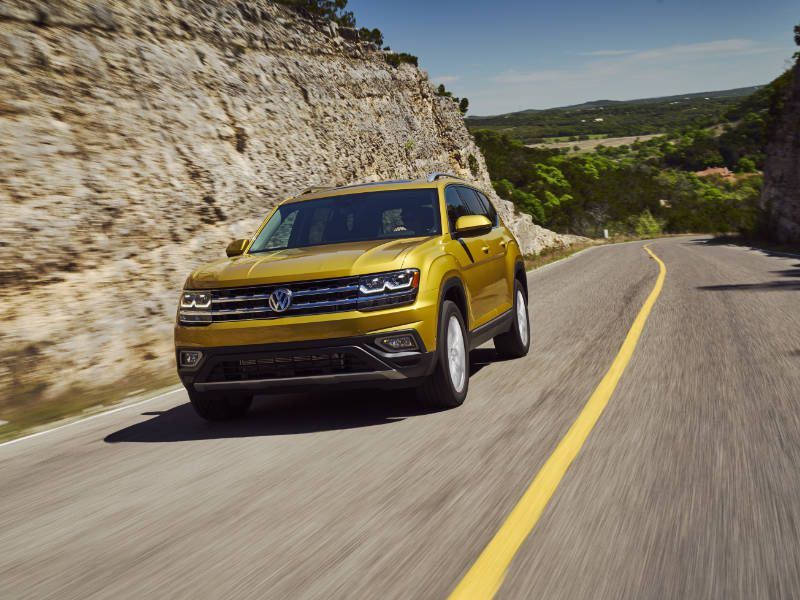
Photo by Volkswagen